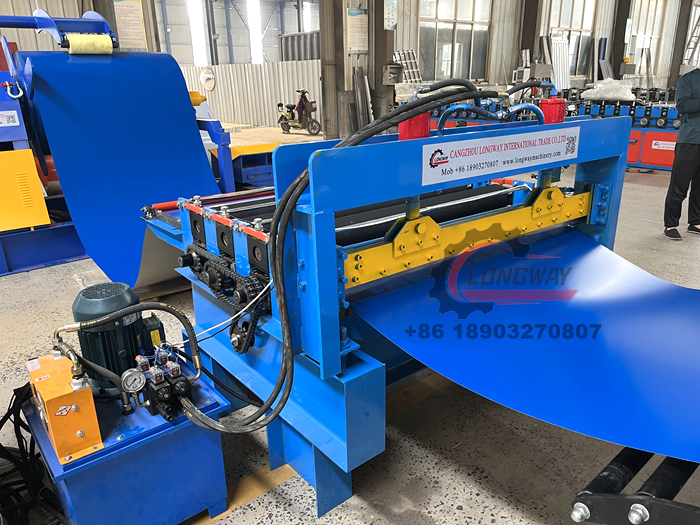standing seam mechanical seamer
The Importance and Functionality of Standing Seam Mechanical Seamers
In the world of metal roofing, the standing seam system has become a popular choice due to its durability, aesthetic appeal, and weather resistance. One critical component in the installation of standing seam roofs is the mechanical seamer, an innovative tool that ensures effective fastening and sealing of the seams. Understanding the functionality and significance of standing seam mechanical seamers is essential for contractors and builders looking to maximize the lifespan and performance of their roofing systems.
What is a Standing Seam Roof?
A standing seam roof features vertical metal panels whose edges interlock, creating a seam that stands upright. This design not only provides a sleek, modern appearance but also offers excellent resistance to water infiltration, which is vital for maintaining the integrity of the building. The height of the seams also promotes efficient drainage, helping to minimize potential water damage.
Role of Mechanical Seamers
Mechanical seamers are specialized tools used to create tight, weatherproof seams in standing seam roofing. Unlike traditional seam sealing methods, which may rely on sealants or manual fastening, mechanical seamers utilize a mechanical process to fold and lock the panel seams together. This technique helps to create a durable bond that can withstand extreme weather conditions, making it a preferred choice among professionals in the roofing industry.
Types of Mechanical Seamers
There are several types of mechanical seamers available, each designed for specific seam configurations and requirements. Some common types include
1. Portable Mechanical Seamers These are lightweight and easy to transport, making them ideal for small jobs or repair work. They allow for quick seam formation in hard-to-reach areas.
2. Electric Mechanical Seamers These tools provide consistent power and speed, making them suitable for larger projects. Electric seamers often come with adjustable settings to optimize performance based on panel thickness and material.
standing seam mechanical seamer

3. Hydraulic Seamers For extremely robust installations, hydraulic seamers deliver significant force, ensuring that seams are thoroughly locked down. They are commonly used in industrial settings where high-quality performance is necessary.
Benefits of Using Mechanical Seamers
Utilizing mechanical seamers in standing seam roofing offers numerous advantages
- Enhanced Weather Resistance Mechanical seamers create a secure bond that is less susceptible to leaks compared to traditional methods, greatly improving the roof's resistance to wind, rain, and snow.
- Time Efficiency The speed and ease of use of mechanical seamers significantly reduce installation time, allowing roofing projects to be completed more quickly.
- Consistency and Quality Mechanical seamers ensure uniform seam quality, minimizing the risk of human error and resulting in a more aesthetically pleasing finish.
- Durability The strong bonds created by mechanical seamers enhance the overall durability of the roofing system, extending its lifespan and reducing maintenance costs over time.
Conclusion
In conclusion, standing seam mechanical seamers play a crucial role in the installation and longevity of metal roofing systems. With their ability to create strong, weatherproof seams, they enhance the overall performance and durability of standing seam roofs. For contractors and builders, investing in high-quality mechanical seamers is essential to achieving professional results that meet industry standards. As the demand for sustainable and resilient roofing solutions continues to grow, the importance of mechanical seamers in the standing seam roofing industry will undeniably remain significant. By embracing this technology, roofing professionals can ensure a high-quality installation that stands the test of time, providing lasting protection for buildings and their inhabitants.
-
Roof Panel Machines: Buying Guide, Types, and PricingNewsJul.04, 2025
-
Purlin Machines: Types, Features, and Pricing GuideNewsJul.04, 2025
-
Metal Embossing Machines: Types, Applications, and Buying GuideNewsJul.04, 2025
-
Gutter Machines: Features, Types, and Cost BreakdownNewsJul.04, 2025
-
Cut to Length Line: Overview, Equipment, and Buying GuideNewsJul.04, 2025
-
Auto Stacker: Features, Applications, and Cost BreakdownNewsJul.04, 2025
-
Top Drywall Profile Machine Models for SaleNewsJun.05, 2025








